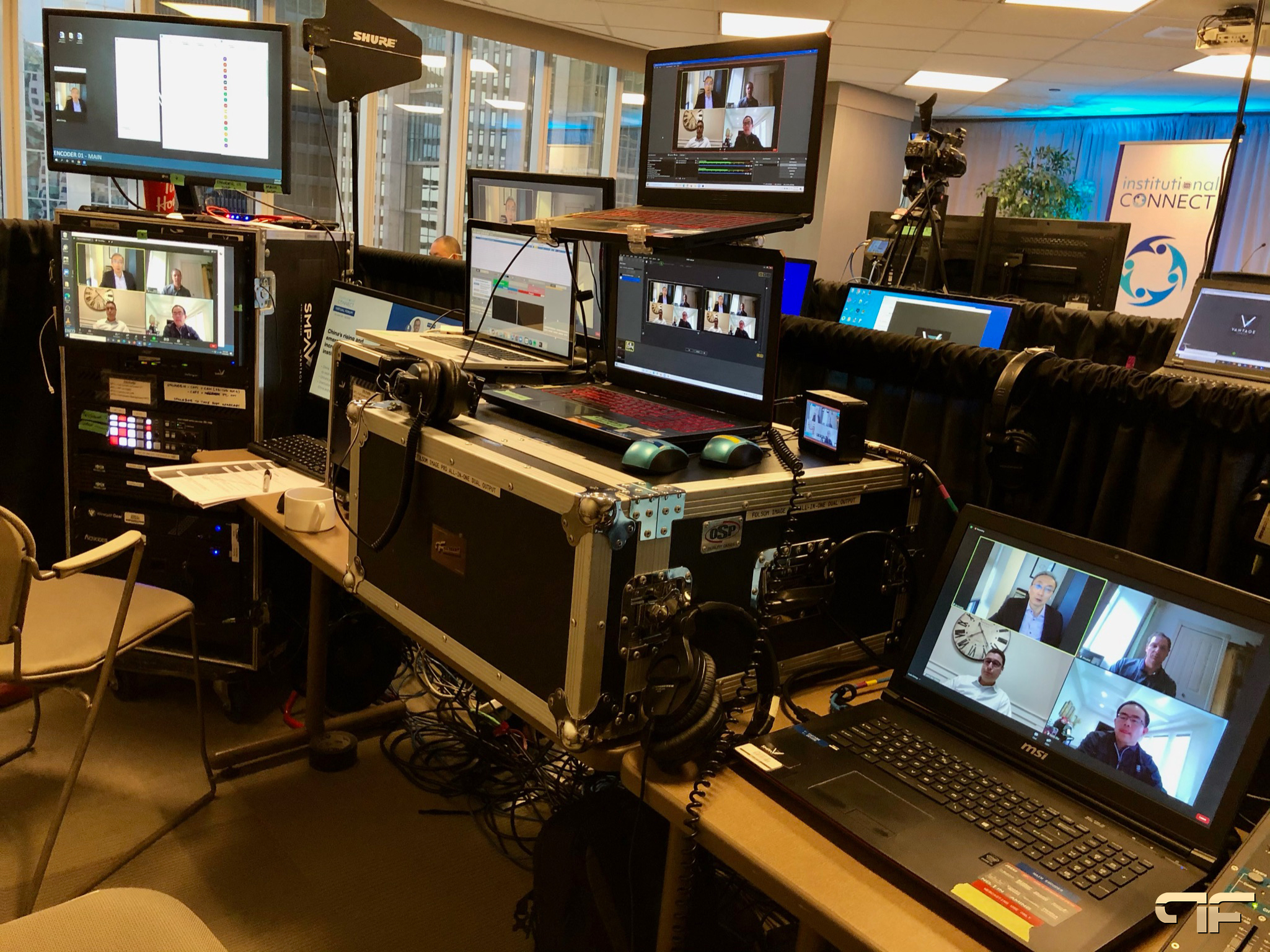
To be successful as a virtual conference panelist or virtual event guest speaker or you must be technologically self-sufficient. Because when you join a conference from a remote place such as your home or office, you play a very important role in the technical execution of the virtual event. Follow these tech tips for virtual conference panelists and you will be able to focus on your message when it comes time to go live.
Internet connection
Your internet connection is definitely the most important part of the whole broadcast. If it comes down, no one can see or hear your presentation. Professional production studios connect internet devices with CAT5 or CAT6 cables to provide the best and most reliable internet connection possible.
You can buy adapters and ethernet cables to mimic this in an indoor studio. You want to be able to connect directly to your router and not use WiFi.
Pro Tip: Ask your AV team for recommendations as there are many different types of adapters and computers available.
If you must use WiFi
If you are unable to connect to a router and need to use WiFi, ask that everyone else in the house with you disconnect for the duration of your event. This will ensure that your device has a priority internet connection in your home.
Someone downloading a game, watching a movie, or uploading a large file may make your image appear instant or your audio may drop. You reduce the chances of interruption if your computer is the only WiFi-connected device when you are directly connected.
Test your internet speed
There are various methods to test your internet speed. Visit fast.com or search for “speed test” online. These tests give you approximate upload and download speeds. As a virtual conference panelist, you are sending your web resource to the studio, so upload speed is more important.
Pro tip: For a typical webcam and microphone integrated into your laptop, 10+ Mbps upload speed is the minimum we recommend.
Equipment
Use the most powerful computer you own and close all other applications that do not need to be open during your virtual conference session. Since your home studio will be a direct studio addition, consider the placement of your camera, microphone, and lighting.
Pro tip: make sure all appliances are switched on, fully charged, or have fresh batteries installed.
Lighting
You want to make sure your face is radiant. Your webcam will fit the brightest light source in the view. Make sure the light in front of your face is brighter than the light behind you. Sometimes turning on more lights in the room can make you look darker on camera if those extra lights are directly above or behind you.
Pro tip: low-cost lighting equipment like ring lights or capture lights for your laptop will improve the lighting of your home studio if the natural light in front of you is not bright enough.
Audio
Wear headphones or earphones for the best experience as a virtual conference panelist. Most video calling systems have built-in echo cancellation, but it is best not to rely on it. Echo results in reaction loops or audio noise. This is when everyone talks right away, the software fits in and no one can listen to each other.
Pro tip: if you use wireless headphones, make sure they are fully charged before calling the conference.
Give Yourself Enough Time
Almost all the technical problems experienced by virtual conference panelists can be avoided if you allow yourself the time to set up and test your equipment and connection. You don’t want to find out five minutes before you go straight out that your internet connection is bad, or your room is too dark for the audience to see your face.
Be sure to call at the time your AV production team requested. This allows time to make the right adjustments. During pre-virtual event technology checks, our in-house production team at Future’s Past Events tests all aspects of remote talent setup, such as sound level/sound, camera framing, lighting, and internet connection.
We also include time for remote guests to chat with each other in the virtual green room so that everyone can feel comfortable. Do not change yourself and your panelists by calling at the last minute before going out directly.
Pro tip: if your technical inspection is one or two days before the virtual event, use the same equipment and location for the technical inspection as you would for the event.
Now you are ready to go straight! Beyond technology, don’t forget to connect with your audience by looking directly at the camera, don’t talk too fast, make your slides easy to read, and enjoy your event!

Comments are closed.